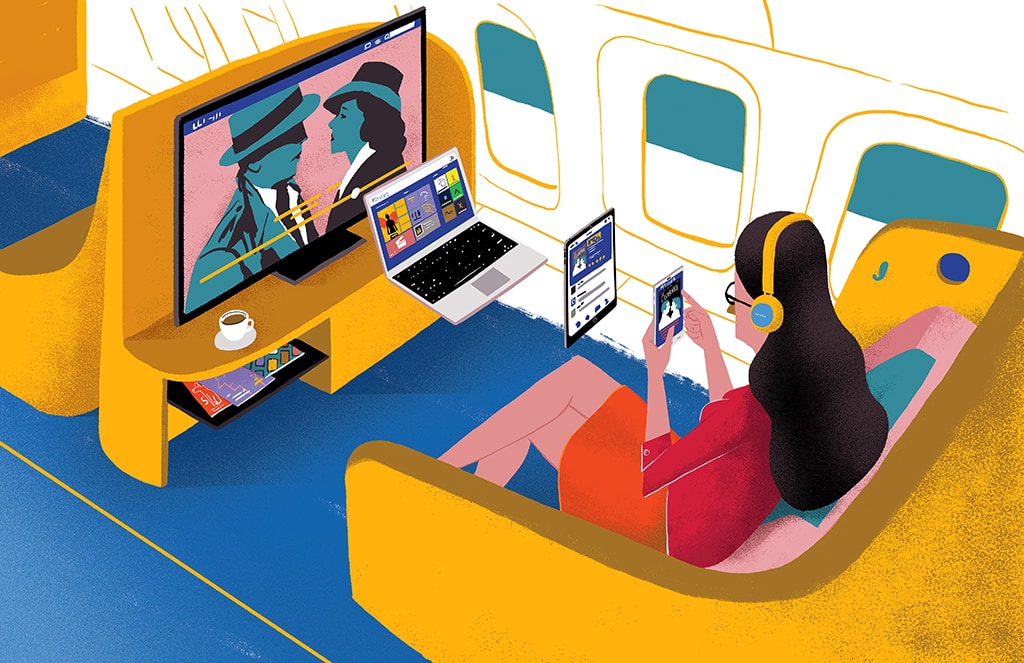Double the Fun With Second-Screen In-Flight Entertainment
Share

This story was originally published in the March/April issue of APEX Experience magazine. Lumexis debuted FTTS Gen-4 at this year’s Aircraft Interiors Expo.
With the growth in popularity of personal electronic devices (PEDs), passengers have developed multi-screening habits at home that they would like to continue in the air, and in-flight entertainment (IFE) and connectivity systems are evolving to offer passengers that flexibility.
“With the loosening of the FAA and EASA restrictions on the in-flight use of PEDs, Bluetooth and gate-to-gate Wi-Fi availability, I believe we’re going to see an increase in the use of [technology that] pairs passenger devices with the seatback IFE screens,” says Jon Norris, vice-president of Sales, Lumexis Corporation. For Norris, the multi-device pairing has the potential to enable “a wide range of dual-screen entertainment and infotainment services.”
“I believe we’re going to see an increase in the use of [technology that] pairs passenger devices with the seatback IFE screens.” – Jon Norris, Lumexis
Lumexis is betting on this potential with its Fiber-To-The-Screen system, which was most recently selected by Caribbean Airlines for installation on its B737 fleet. Airline passengers can interact with the moving map, order food or drinks, and shop from a duty-free selection with their personal devices, just as they might on the larger screen, Norris says. They can also access data on video content they’re watching, such as commentary on movies or TV episodes, scrolling script and even purchase items related to the entertainment.
Thales is betting on it, too. The recent launch of its Android-based Thales STV+ IFE platform on JetBlue unlocked new potentials with personal device pairings that hadn’t been considered before. Jamie Perry, the airline’s VP of Brand and Product Development, believes dual screening could also improve in-flight gaming. “We never really got into gaming on seatback, because it’s really difficult to play games with the controller,” he says. “But if you can use your device to control what’s on the screen, [you] can do an awful lot of things on the seatback that you couldn’t do before.”
Airlines can also benefit from multi-screening systems by pairing their own devices to troubleshoot or reset platforms that are down, or offer additional services to passengers through the IFE screen.


